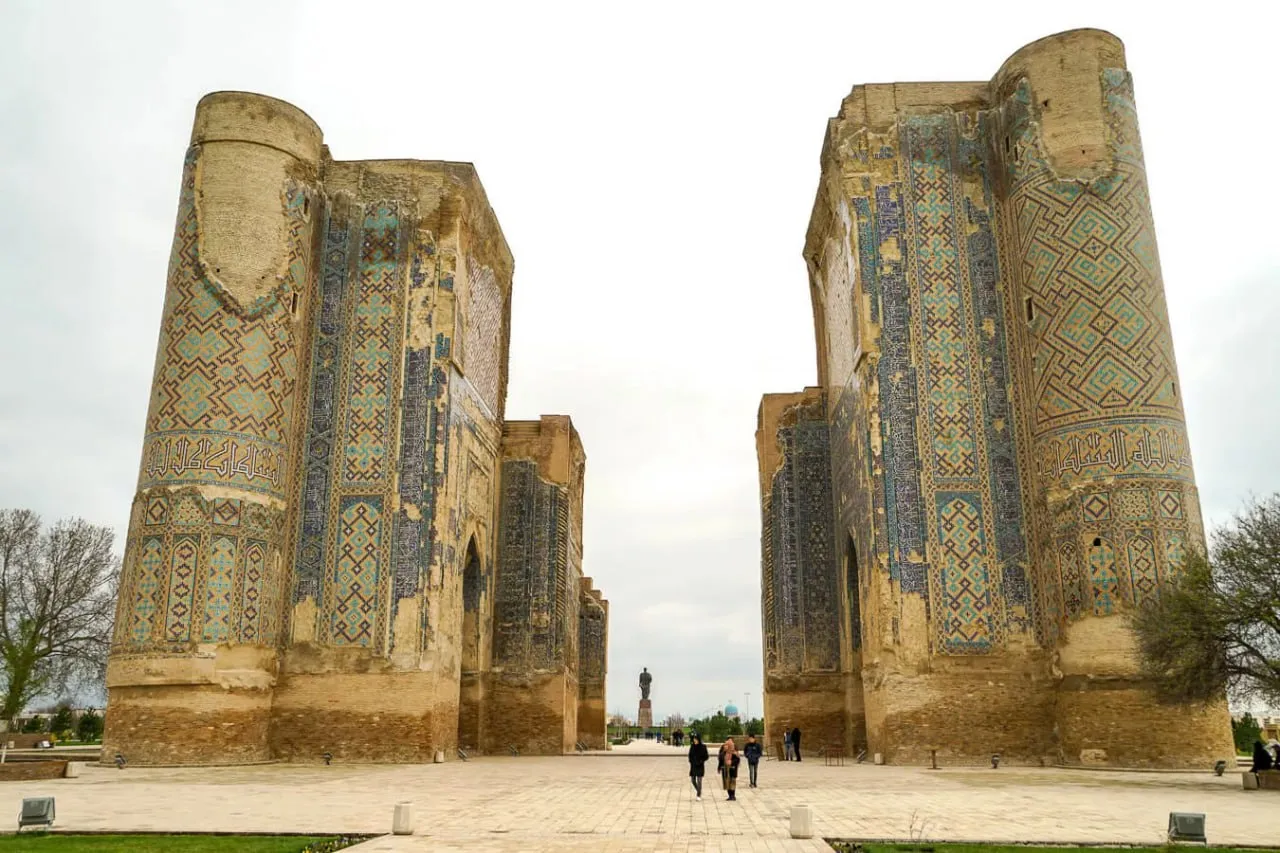Each version has serious reasons regarding the beginning of the construction of the palace. Thus, for example, another well-known historian of the 15th century Abd ar-Razzaq Samarqandi notes in his book that the Khorezmi an masters had built a high-rise palace, currently known as Oqsaroy. Anyway, according to data provided in the majority of historical writings Temur conquered Urgench after his fourth military campaign on Khorezm, i.e. in 1388, which gives reason to believe that the masters from Khorezm had arrived in Kesh and took to construction activities in the indicated year. Later, leaning on the analysis of complex data from written sources, V.V. Bartold arrived at a conclusion that Oqsaroy had been built by Khorezmian masters in 1380, or, to be more precise, it was the date of commencement of palace construction, and that construction workers from many countries took part in it.
Regarding the Khorezmian masters concrete participation in construction activities, the study of sources and research work provide an opportunity to assume that they made different types of tiles and performed facing works. Orientalilst A.Y. Yakubovsky wrote about the date of commencement of Oqsaroy construction and participation in it of masters from adjoining countries. He justly noted that the palace was the fruit of synthesis of different construction schools, both local and and those of other countries of Amir Temur’s state.
In the ’80s of the 19th century, a rather scrupulous researcher of ancient monuments on the territory of Turkestan and neighboring khanates (Bukhara and Khorezm), A.L. Kuhn, visited Shahrisabz with a scientific objective. Intellectual scientist-theologian and historian from Samarkand Mirza ‘Abd ar-Rahman Mustajir as-Samarqandi was his assistant and accompanied A.L. Kuhn in his scientific reconnaissance of the majority of historical monuments of Turkestan. He prepared for A. L. Kuhn extracts from individual inscriptions on several monuments, including part of epigraphy of the Oqsaroy palace. They were stocked in Alexander Kuhn’s archive and are currently kept in the Archive of orientalists under the Institute of oriental manuscripts of the Russian Academy of sciences.
Among a number of other monuments A. Kuhn examined the Oqsaroy and read the date on one of its inscriptions – 797 (1394–1395), which is likely to be attributed to one of the stages of facing the portal of the palace. Moreover, according to reliable data of the Spanish ambassador Ruy Gonzales de Clavijo, who visited Shahrisabz in 1404 (as part of the Spanish Embassy), which sought an audience with Amir Temur; he was a witness of continued construction activities in Oqsaroy. According to his, the construction of the palace had not been yet completed even much later than the date fixed in the epigraphy. Researchers of the monuments of Shahrisabz of the epoch of Amir Temur and the Temurids, M.Y. Masson and G.A. Pugachenkova, also had arrived at a conclusion that the construction of Oqsaroy had started not earlier than 1380, while by 1396 the constuction works had not yet finished.
We also believe that the work on the construction of Oqsaroy palace could not be finished within a short period of time and lasted for more than 25 years in connection with the huge scope of construction, decorative and finishing works. What has left today of the once huge building of that era are two powerful pylons of the enormous entrance portal and insignificant number of glaized mosaic floors of the palace.
You can learn more about the topic in the book-album "Architectural epigraphy of Uzbekistan. Qashqadaryo, Shahrisabz" of the series "Architectural epigraphy of Uzbekistan".
The main sponsor of the project is the oilfield services company Eriell-Group.

